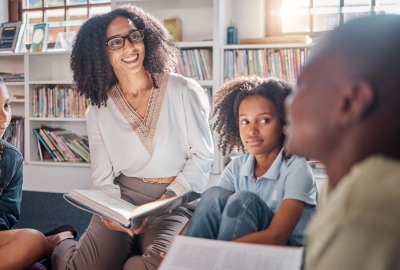
Let’s Talk about Race
by Ming-Te Wang and Christina Scanlon
University of Pittsburgh
How do we address inequitable school racial climates? As a nation, issues of race and equity have come to the forefront, including topics related to what can or should be said in a classroom about race, the history of systemic racial inequity, and the role of privilege in everyday life. However, educators and school administrators don’t know how to address these important topics with their students and in their schools.
Open and honest discussions about race, privilege, and bias are relatively new parts of the educational experience. Think back to your own education—how were these topics discussed in your school? Were they discussed at all? Many times, especially in primarily white schools, race was not discussed. So teachers today—the majority of whom are middle-class, monolingual, White females—need guidance on how to talk about race and culture with an increasingly diverse population of students. Given the right tools, though, teachers can be a driving force in the creation of more inclusive, equitable schools. We present school-based racial socialization as one of the most promising tools available for establishing more positive school racial climates.
Educational policies and practices that acknowledge cultural differences, promote cross-cultural relationships, and explore cultural identities are important aspects of school racial climate. Importantly, these practices engage the entire school community—that is students, teachers, staff, administrators, parents, and community members—in conversations about privilege, power, and oppression. These conversations help everyone understand how bias and discrimination operate in the lives of school community members both within and outside of the school.
Schools can use a wide variety of activities to highlight diversity and inclusion. For instance, teachers may incorporate students’ cultural history into assignments and curricula, organize celebrations for cultural holidays, and support affinity groups for students of diverse backgrounds. Diversity and inclusion activities are not limited to students, as adults at school can also examine individual/group biases and cultural awareness during professional development sessions. Doing these things helps to create safe spaces for students to process racialized national and local events and discuss how these events affect their lives.
The good news is that teachers appear to be ready for system-wide change. Cultivating a positive school racial climate requires adults within the school who are comfortable exploring their own beliefs and biases towards these areas of diversity. There has been a recent spike in best-selling books, thought pieces, and position statements geared towards educators who want to better serve and connect with their ethnically-racially diverse students. Teachers are ready to do the difficult and often uncomfortable work of examining personal biases and the role of privilege in their lives and the lives of their students. This deeper level of self-awareness and whole-hearted commitment to valuing diversity are essential to creating a positive school racial climate.
It’s time to talk about race! Schools seeking to promote cultural awareness and respect for diversity must explore ways to address these issues through school-wide initiatives. With improved research and the commitment of school personnel, we believe that these practices will help create more equitable and inclusive school climates for all members of the school community.


